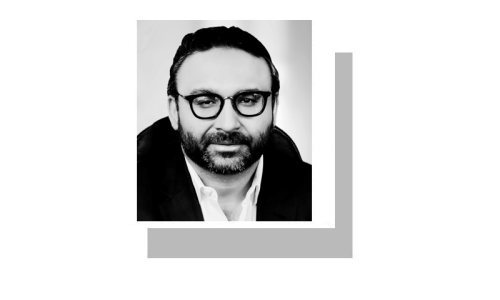
GONE are the days when Urdu’s literary magazines were something to talk about, something to cherish. Alas, no more, because Urdu’s literary journalism has now shrunk to just a couple of monthlies and some periodicals published sporadically. A few more are barely afloat, period!
Not too long ago, some three decades or so, Urdu’s literary journalism was at least alive, if not kicking. Fairly large number of literary magazines were being published regularly and a large circle of readers used to read them, take them seriously and discuss them. It was indeed not like 1960s or 1970s, when a notable short story or significant critical essay published in a literary journal would become a hot topic and veterans could have been heard arguing noisily over its merits or demerits at, say, Lahore’s Pak Tea House or Karachi’s Zelin’s Cafe, but still in the early 2000s one could grab some literary magazines and enjoy the writings of seasoned writers.
Until early 2000s several prestigious Urdu literary magazines were making their presence felt, for instance, Vazeer Agha’s Auraaq, Ahmed Nadeem Qasmi’s Funoon, Faheem Aazmi’s Sareer, Farman Fatehpuri’s Nigar, Shabnam Roomani’s Aqdaar, Siddiqa Begum’s Adab-i-Lateef, Ajmal Kamal’s Aaj, Ahmed Zainuddin’s Roushnai and a few more — though many others were struggling. Some of them ceased publications soon and few could survive.
Yet some hope was there despite the fact that during the last decade of the last century or in early 2000s, some of Urdu’s long-running and reputable literary periodicals had either gone out of business or were about to make their exit unceremoniously. Such magazines included, sorrowfully, some big names too, such as, Sehba Lakhnavi’s Afkaar, Saeed Seikh’s Alaamat, Ata-ul-Haq Qasmi’s Muaasir, Naseem Durrani’s Seep and legendary Muhammad Tufail’s epoch-making Nuqoosh, not to mention many more. Fortunately, Sawera, one of the oldest surviving Pakistani literary magazine of Urdu is still published, albeit not as regularly as one would have wished. Mah-i-Nau, another old salt, is usually available online and print edition is hard to come by.
Some of those joining the party quite late, such as Collage and Tanaazur, could hardly survive for a decade or so, though their contents were crisp and offered new perspectives. Similarly, Lauh closed down with the death of its editor Mumtaz Sheikh during Covid-19. On the other hand, surprisingly, some comparatively younger writers were venturing to bring out some new literary magazines, for example, Mubeen Mirza began publishing Mukalama from Karachi in mid 1990s and it is still being published, though some other new entrants, such as Baadbaan and Namood, were not as lucky and had to be closed down. A few more entering the arena quite recently, such as Isteaara and Saibaan, are reported to be struggling — let us keep our fingers crossed.
Generally speaking, Urdu’s literary journalism is in a downward spiral and the outlook is gloomy: only two or three monthly literary magazines are now published regularly, and Qaumi Zaban, published by Anjuman Taraqqi-i-Urdu Pakistan, is the most regular of them. Akhbar-i-Urdu, published by the National Language Promotion Department, has become tardy. Al-Hamra, yet another old journal, too, has become a bit irregular and one hopes it is still afloat, though these days Urdu’s literary magazines’ names resonate with the expression ‘missing, probably dead’, as the absence does not necessarily mean death. Makhzan, published by Lahore’s Quaid-i-Azam Library, is published but annually.
Some literary magazines published by government-run organisations, too, are usually behind the schedule and they include Saheefa, Adabiyaat, Iqbal and Iqbaliyaat.
Research journals are also part and parcel of literary world. But most of them are published by our universities and of late a section of academia has become quite wary of research journals publishing literary research papers. With mounting complaints about their substandard contents and unethical practices, these research journals are now used mostly, as put by some university teachers, as a means to fulfil the promotion criterion at the universities. A consensus is developing that Urdu’s research journals have now got little or nothing to do with either literature or research.
Of course there are a few exceptions, but such examples are scarce. Otherwise, as many academics would vouch, the HEC has virtually sabotaged Urdu research and has in fact pushed all the academics to join in the race to get a certain number of research papers published in order that they are promoted, not minding the standard and the process involved.
Unlike in the past, now the HEC does not grant any special funds for publication of research journals and expects the research journals to charge a handsome amount from the contributors in the name of processing fee. In some cases, this fee may be as high as Rs40,000. How can you ask researchers for standard when you are charging them a hefty amount in the name of so-called processing?
Published in Dawn, August 21st, 2023














































Dear visitor, the comments section is undergoing an overhaul and will return soon.